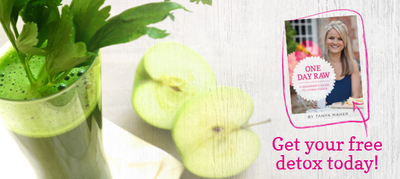What's in my pantry
When you are new to uncooking, not much looks or sounds familiar, and that’s ok- you were once new to cooking too. However as you skim through this list, you’ll notice that not only do you already recognise all the food groups, but that there are more of them than you originally thought.
Raw foods are abundant in variety. Let this excite you rather than overwhelm you.
There’s no need to spend a fortune- it’s all about stocking up a little at a time. Begin by adding 2-3 of the below items to your weekly grocery list and you’ll be equipped to make anything in the raw world… certainly anything in The Uncook Book: The Essential Guide to a Raw Food Lifestyle (UK or US).
Yep your shopping list for the entire 146 recipes is below!
If you’ve been reading the blog for some time, you’d know that I try my best to stick to the ingredients easily found either in a supermarket or your nearest health store, nothing too crazy. The Uncook Book was created exactly the same way.*
FRUITS
Lemons, limes, avocados, apples, oranges, bananas, watermelon, cantaloupe/rock melon, pineapple, berries (fresh and frozen), pears, kiwifruits, nectarines, passionfruit, grapefruit, grapes, papaya, figs, coconut (both mature brown and young green, which are mistakenly categorised as nuts).
VEGGIES
Courgette/zucchini, celery, carrot, beetroot, sweet potato, mushrooms (oyster, button, chestnut, portabella, shiitake), asparagus, fennel, sweet corn (fresh, frozen and baby corn), popped garden peas, snow peas, broccoli, cauliflower, cabbage, parsnip, Jerusalem artichokes, butternut squash or pumpkin, and of course tomato, cucumber, aubergine and bell peppers (which are all fruits, but found in supermarket vegetable aisle).
GREEN LEAFIES
Kale, cavolo nero, spinach, Romaine lettuce, chicory lettuce, watercress, rocket/arugula.
HERBS & WILD EDIBLES
Mint, basil, parsley, thyme, coriander, dill, green onion, chives, rosemary, snow pea and sunflower shoots, edible flowers (fresh and dried pansies or rose petals), micro greens.
NUTS & SEEDS
Nuts (almonds, cashews, hazelnuts, walnuts, pecans, Brazil nuts, pine nuts, pistachios), seeds (sunflower, chia, sesame, pumpkin, poppy, hemp seeds (both hulled and in shell) plus buckwheat and quinoa (both of which are mistaken for grains)).
GRAINS, BEANS & LEGUMES
Rolled oats (buy ready sprouted porridge oats), sprouted mixed beans and lentils, alfalfa sprouts, bean sprouts.
SEA VEGETABLES & ALGAES
Wakame, dulse, nori, kelp noodles, spirulina and chlorella.
SPICES & FLAVOURINGS
Himalayan salt, peppercorns, garlic (fresh and powder), onion (fresh white and red onions, scallions and onion powder), ginger (fresh and powder), turmeric, cumin, garam masala, paprika (plain and sweet smoked powder), cayenne, chili (fresh, powder and flakes), winter spices (cinnamon powder and sticks, nutmeg, coriander, star anise, cardamom), mixed Italian and other dried spices (dried basil, parsley, oregano, thyme, dill, rosemary, sage), caraway seeds, wasabi powder, Dijon mustard, vanilla (pod, extract and powder).
FATS, OILS & BUTTERS
Extra virgin coconut oil, extra virgin olive oil, toasted sesame oil (not raw, but so good, you’ll eat way more healthy salad with a dash of this), other (caster oil, hemp or flax seed oil), raw tahini, almond butter, coconut butter, peanut butter (not raw, use only occasionally), cashew/macadamia butter, canned coconut milk (not raw, buy only organic with no additives).
CONDIMENTS
Tamari or nama shoyu (both are fermented soy sauces), Bragg’s liquid aminos, apple cider vinegar, balsamic vinegar, miso paste (sweet white and dark), nutritional yeast (buy fortified with vitamin B12), sun-dried tomatoes (preferably preserved in salt, but look for quality oil if in oil), olives, tabasco sauce.
SWEETENERS
Dried fruits (pitted dates, medjool dates, raisins, apricots, pineapple, goji berries, mulberries, golden berries, and desiccated coconut), maple syrup (not raw, but contains minerals and beautiful flavour), agave (highly controversial, so make sure you know your source), raw honey (minimum of UMF 10+ is best), coconut palm sugar, xylitol, freeze-dried strawberries (or powder), yacon syrup and liquid stevia.
SUPERFOODS
Cacao (powder, butter, paste/liquor and nibs), matcha green tea powder, lucuma, maca, bee pollen, acai (powder and pulp), medicinal mushrooms (cordyceps, chaga, reishi), carob, algarroba and baobab.
OTHER
Dairy free probiotic capsules, Medicine Flower extracts (coffee, butterscotch or caramel), peppermint essential oil, coffee beans, Assam tea leaves (or English breakfast tea bags), coconut flour (or buckwheat flour), kombucha and rice papers.
*Tanya’s Top Tips:
#1. The further down the list you get, the more likely these foods are to be found at a health store, not a supermarket. Also check out the Resources section on page 189 for ideas on where I shop, or see some of them here>>
#2. The foods within each category are listed in order of popularity in my kitchen.
#3. Always buy nuts and seeds in bulk and store them in the freezer, where they could stay fresh for up to three years.


